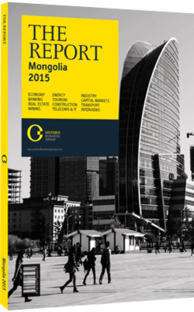S. Javkhlanbaatar, Director-General, Invest Mongolia Agency: Interview

Interview: S. Javkhlanbaatar
What trends have you seen in terms of foreign direct investment (FDI) in 2014?
S. JAVKHLANBAATAR: According to statistics for the first half of the year, FDI decreased to roughly $400m. While concerning, it is misleading to rely too heavily on one metric. For instance, over the same period, more than 170 foreign companies entered the market, which is largely in line with the 390 figure we saw for full year 2013. The way foreign dollar inflows are categorised also makes a difference when calculating FDI numbers. Government concessions, such as the CHP5 power project and those meant to develop the country’s transportation infrastructure, have attracted successful bids by a number of international investors, but these do not show up in the FDI figure, as the details of the projects are still being finalised.
Many projects currently being planned by the government have yet to be tendered out, and the value of such projects will exceed $10bn. Likewise, total portfolio investment, historically very small, reached more than $800m at the end of 2014. The investment law introduced in November 2013, as well as new laws for petroleum and investment funds, has dramatically changed the legal environment and have elicited positive reactions among domestic and international investors. In fact, our agency has seen a marked uptick in the number of foreign investors seeking information about the Mongolian economy since its implementation. More than 800 individual investors have contacted us and expressed interest, and this does not include the investors that attend Mongolia’s business forums in other countries. So, the picture is much more nuanced and there are more positive trends than are immediately apparent when just looking at FDI figures.
How is the government working to promote investment by international companies?
JAVKHLANBAATAR: As mentioned before, steps by the government to update the legal environment have been very positive. In addition to the new investment law, recent amendments to the minerals law and petroleum law should make the regulatory environment in those areas more clear and, as a result, attract more investment. The government has also demonstrated its commitment to removing trade and investment barriers between Mongolia and other nations. The economic partnership agreement agreed with Japan in February 2015 is a concrete example of this.
Mongolia maintains bilateral investment treaties with 43 countries and is in the process of negotiating agreements. These steps need to be matched by bigger initiatives. Mongolia is a small economy and large government-initiated projects can have a major impact on the growth of different sectors. The transportation and power infrastructure projects and privatisations being discussed would be a major boon for the economy and would be attractive to foreign investors.
Which sectors pose the greatest opportunities for foreign investors?
JAVKHLANBAATAR: One positive trend that we have seen among new investors is that they represent a number of sectors outside of mining. Services have been particularly well represented. For instance, with the new securities law, there are a number of opportunities for new entrants in financial services. Insurance, fund management and new credit and loan products are all areas where foreign companies can become involved. Health services also offer major potential. Many businesspeople have recognised that they could develop these services within the country given the demand. Foreign firms are also becoming more involved in construction materials production such as roofing, windows and pre-cast concrete. This is a very positive development given the considerable amount of building that has gone on over the past few years and the rising costs of importing these materials. Husbandry has also seen more interest. We still import dairy and meat products; this needs to change and foreign firms can help us develop our capacity in food processing.
You have reached the limit of premium articles you can view for free.
Choose from the options below to purchase print or digital editions of our Reports. You can also purchase a website subscription giving you unlimited access to all of our Reports online for 12 months.
If you have already purchased this Report or have a website subscription, please login to continue.

